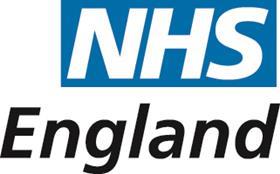Rob Webster on how West Yorkshire and Harrogate Health and Care Partnership has set out common points of agreement on its purpose, principles and approach and is working towards providing optimum healthcare to its people
“Why do you do your job?” is a question I always ask new starters in my NHS trust. The answers invariably cover the enjoyable teamwork, helping people, using skills, belief in the ideas and principles of the NHS and, above all, making a difference.
You might call this a public service ethos, but it isn’t the preserve of public institutions.
Making a difference
In association with
Tapping into this vocation is essential if we are going to make a difference to the people of West Yorkshire and Harrogate. In general, they die sooner and live with more years of disability than their southern counterparts. For people with a learning disability, enduring mental health conditions or in certain populations such as Gypsy, Roma and Travellers, the difference is even more stark.
We only work together at a West Yorkshire and Harrogate level where it makes sense to do so – where there are economies of scale, where good practice can be shared and where wicked issues can be solved together
There are reasons for this. One of them is that we have operated in a system that is sub-optimal; one largely designed to tackle better throughput in hospitals rather than tackle the wider determinants of health and effective support for people with long-term conditions. Another is that we haven’t mobilised our people to work in different ways.
Cynics will say that the integrated care system movement is the latest iteration of the perpetual deckchair rearrangement that bedevils the NHS. But I hope to show that it is a chance to create a coherent set of arrangements that deliver for local people in a way that meets their needs today. An antidote to the top-down machinations of Whitehall-driven reform that cannot be flexible or durable enough to work with local communities.
West Yorkshire and Harrogate Health and Care Partnership is the second largest in the country. We cover a large geography, home to 2.6 million people, 115,000 staff and 260,000 unpaid carers. We have 50 neighbourhoods, seven local care partnerships, eight councils and six places (Bradford District and Craven, Calderdale, Harrogate, Kirklees, Leeds and Wakefield). And we have hundreds of organisations working across our patch, including independent care providers, voluntary and community organisations and charities.
At the beginning of this partnership, we spent a lot of time doing two things. Firstly, setting out common points of agreement on our purpose, principles and approach. And secondly, being clear about what we want to achieve. In a context of impatience for improvement and operational distress, spending time on these foundations is essential.
Alongside principles of ambition, inclusivity of local government, simplified decision making and the need for great analysis, is the principle of subsidiarity. The majority of our work takes place at a local level. This means we only work together at a West Yorkshire and Harrogate level where it makes sense to do so – where there are economies of scale, where good practice can be shared and where wicked issues can be solved together.
The good news is that from world-class commissioning to health and wellbeing strategies, work has been progressing for more than a decade locally with councils, the NHS and communities to tackle the issues that bedevil them. We are not starting from scratch and we have work that has endured political and structural upheaval.
Addressing gaps
Putting these ingredients together, we have galvanised ourselves to address three gaps across our area: health inequalities, variation in care and financial sustainability. And with our combined resources, we might just succeed because our staff get out of bed every day to make a difference and do a good job.
We placed a lot of emphasis on strong public and staff engagement, and on engaging our local politicians and stakeholders
This takes a focus on a different type of leadership – based on systems and partnership, mutual accountability and collaboration. It is also based on a fundamental truth and a moment of philosophical enlightenment.
Like the adage “we are not stuck in traffic, we are traffic”, we realised that the staff, organisations, places and communities are the integrated care system. The partnership is not the boss of the partners, it is their servant. And this is crucial. It allows the power and energy to remain aligned to statutory accountabilities and to be given to the partnership when it matters.
We reflected this in our governance, making sure that NHS organisations, local government, the third sector, Healthwatch and others are seen as equal partners in this endeavour.
We placed a lot of emphasis on strong public and staff engagement, and on engaging our local politicians and stakeholders. We spent a lot of time looking at how, collectively, we can develop a workforce for the future – and how we can recruit, retain and train our workforce at every level.
And we encouraged a distributed approach to leadership, which means that we can have one part of the system leading on behalf of everyone. Individual chief executives alongside colleagues from all sectors leading on our priority programmes, for example cancer, improving planned care and harnessing the power of communities.
We still have a way to go if we are to add our name to the list of internationally admired systems making a difference. But whether it’s in the clinical services we’ve improved to save lives, or the capital and transformation funding we’ve secured to overhaul health and care services, our partnership is flourishing in tough times. Examples range from better stroke and vascular care to suicide prevention, new eating disorder services, smoking cessation and technological advances that attract global interest.
Partnership defined by purpose and shared values, supported by governance and good incentives, will make a difference. The opportunities for people across West Yorkshire and Harrogate are significant and we’re determined to make the very best of them.





























4 Readers' comments